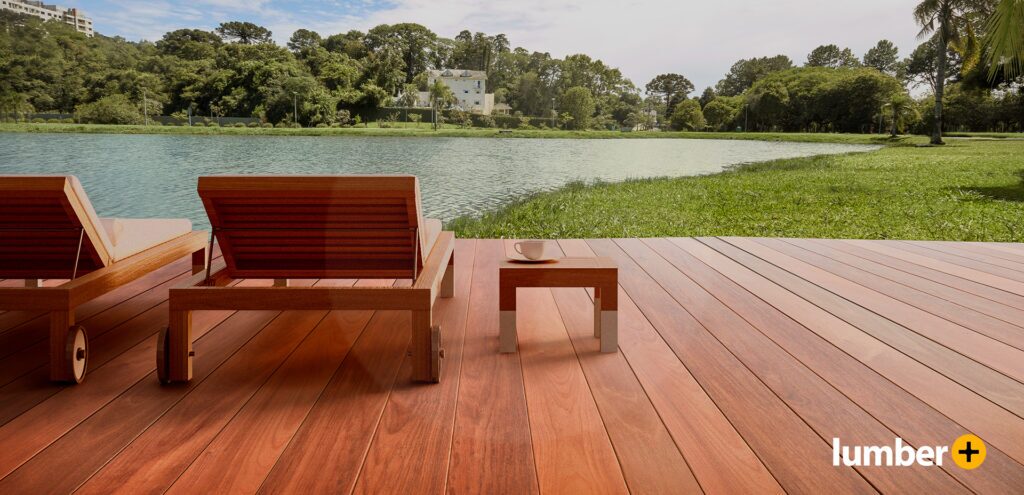Ah, the eternal question: of the deck material options, which one is the best? Hardwood, composite, or PVC? The truth is: there’s no wrong answer when it comes to these three materials. But this implies the need to adopt a new perspective: anything can be “the best”, but it depends on your needs.
While real wood, composite, and PVC decks have several benefits in common, such as durability and beauty, they differ in cost and the level of maintenance required. Some of them are less expensive while some others are easier to maintain.
To save you time, we analyzed the advantages and differences of these three outdoor deck systems so that you can draw your conclusions.

HARDWOODS: The best-kept treasure from the rainforest.
They come in different varieties and have special properties for outdoor use. Contrary to popular belief, hardwood has nothing to do with pine or treated pressure wood. This is another level of wood, and it’s widely used in wooden structures construction thanks to its outdoor properties and its resistance to inclement weather and humidity.
- The classic warmth and elegance of wood that, with its aesthetics, blends in with the natural environment of any garden.
- The touch, feel, and type of grain of the wood that other materials don’t have.
- Some types of hardwoods are very durable, even exceeding fifty years lifespan, and require only minimal maintenance after several seasons of use.
- Wood is a poor conductor of heat due to its shortage of free electrons, which are responsible for the thermal transmission of energy. Hardwood boards absorb very little heat from the sun, making them suitable for walking barefoot.
- It has anti-slip properties.
- Hardwood is a noble and natural material, very versatile for making different types of coatings and designs. You will always be able to adapt to any idea.

COMPOSITE: The advantages of coextrusion
Wood Plastic Composite (WPC), or just composite, is a great alternative that has evolved a lot over the years. Some composites use coextrusion technology, this means that their components are fused, welded, and then cooled. The final product comprises all these properties added together, and, like wood, they are highly effective and weather-resistant materials.
- It combines wood fibers, and up to 95% recycled materials, allowing it to take advantage of both materials. In most cases a set of additives it’s also added.
- Design, aesthetics, and natural appearance imitating wood grain and nuances. It also has anti-slip properties.
- Long durability and minimal or no maintenance: can be cleaned with soap and water. It does not require sanding or varnishing.
- Due to its composition, the best places for its installation are areas exposed to direct sun and rain, for example, terraces, gardens, around swimming pools.
- Resistant to salt water and marine climate. They are kept in optimal conditions, even in very humid environments.
- Composite ends up costing even less than cheap materials, such as pressure-treated wood because you don’t spend money on yearly maintenance.

PVC: The lightweight and no-maintenance choice
PVC has insulating and hermetic properties that are not found in other materials. Being made of 100% recycled plastic, PVC is a completely ecological alternative. In addition, the weather or external natural hazards are harmless for this material.
- When it comes to realism, PVC prefers to go for different designs, textures, and colors than wood or even composite decking.
- PVC boards are extremely resistant to outdoor weather due to their inorganic nature.
- It counteracts its lack of strength from a structural point of view (such as wood or composite), by being a lightweight material that is easy to maintain.
- In addition to being 100% recyclable, it has a low environmental impact and is immune to pollution.
- Everything made with PVC is easily washable and does not require any special treatment to maintain its appearance.
- Thanks to the material from which they are made, PVC boards are resistant to UV rays, water, or humidity and attack by termites, ants, and other insects.






